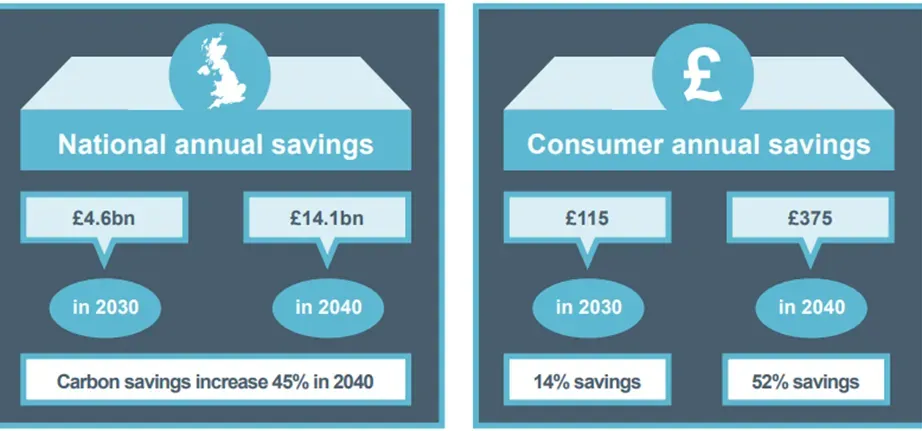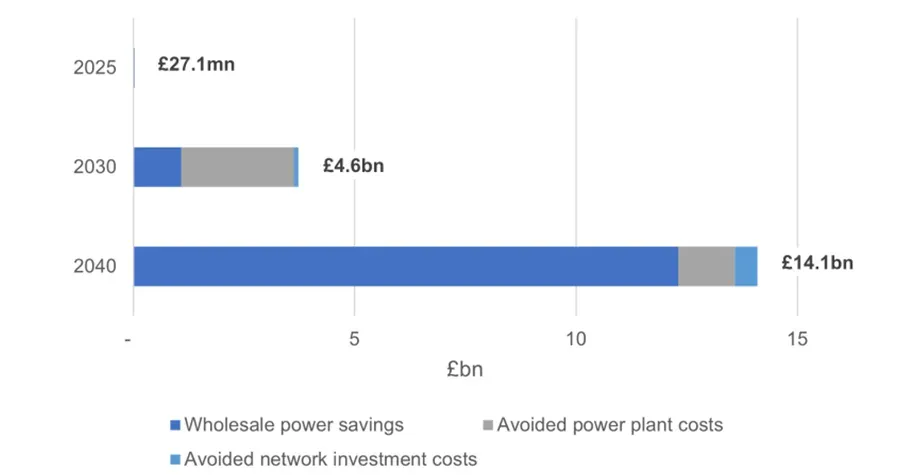New analysis from Cornwall Insight and Smart Energy GB has revealed the substantial cost-saving potential of household flexible electricity initiatives such as time-of-use tariffs, smart meters, solar PV, and batteries.
The has data revealed national wholesale and system electricity costs could be cut by an annual £4.6bn in 2030 and £14.1 billion in 2040 if flexible energy solutions are implemented. Additionally, households that participate in flexible electricity initiatives could stand to cut wholesale electricity costs by more than 14% by 2030 and a staggering 50% by 2040 – a predicted annual saving of £115 and £375 respectively for an average household.1
The potential savings for households will be welcome news prior to the new price cap announcement on Friday 25th August. These are expected to show the cap remaining significantly above pre-2022 levels, with experts saying no respite is expected before the end of the decade and likely far beyond.
Typically, in Great Britain, daily peaks in electricity demand occur on weekdays between 4pm and 7pm. To meet peak demand, additional fossil fuel-generated electricity is often required. As these sources are more expensive than renewable options such as wind and solar, this drives up wholesale electricity costs and ultimately impacts consumer bills. With the anticipated increase in electricity demand over the next few years, this issue is poised to become even more acute.
Encouraging consumers to modify their electricity usage according to the availability or price of electricity, by, for example, installing smart meters so they can access time-of-use tariffs, and participate in trials like the National Grid ESO Demand Flexibility Scheme will boost off-peak energy usage, saving money and taking pressure off the grid.
Additionally, the report calculates that customers who adopt self-generation and energy storage for use during high-cost periods, stand to save hundreds of pounds from their annual energy bills. Even households that do not actively participate in household flexibility will see an overall reduction in their electricity bill as a result of a more efficient system.
The benefits would also be felt on a national scale; with the modelling showing that by embracing flexible electricity usage GB could avoid the need to construct the equivalent of four additional gas-fired power stations in 2030. This not only translates to cost-savings of over £2.5 billion but also provides significant environmental benefits for our communities. It would also reduce the need for upgrades to the electricity wires and infrastructure, which saves almost £1bn in 2030.
Figure 1: National and consumer savings under the flexibility scenario

Source: Cornwall Insight
Figure 2: Overview of total savings under the flexibility scenario, £bn

Source: Cornwall Insight
This analysis unveils the immense potential of flexible household electricity use to support GB as it journeys towards a renewables-based system. It is clear that by empowering consumers to become the architects of their own energy usage as well as supporting home decarbonisation technologies across the consumer base, the government can reduce expenses, alleviate strain on the grid, and even eliminate the need for additional costly gas-fired power stations.
This is a defining moment in our energy journey. Britain is moving along the path to a more electrified future, where household engagement with flexibility will enable us to reach net zero at lower cost, allowing consumers to realise the financial benefits associated. Smart meters play a pivotal role in this transition, providing crucial data and insights that empower consumers to optimise their energy use.
By embracing household flexibility, we not only revolutionise our electricity landscape but also rejuvenate our commitment to a greener, more sustainable future.














